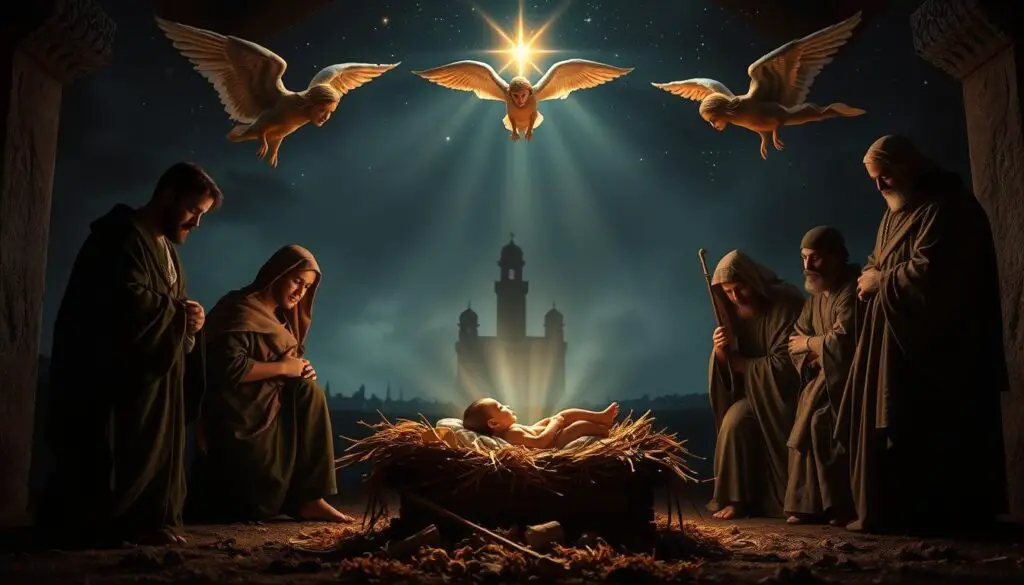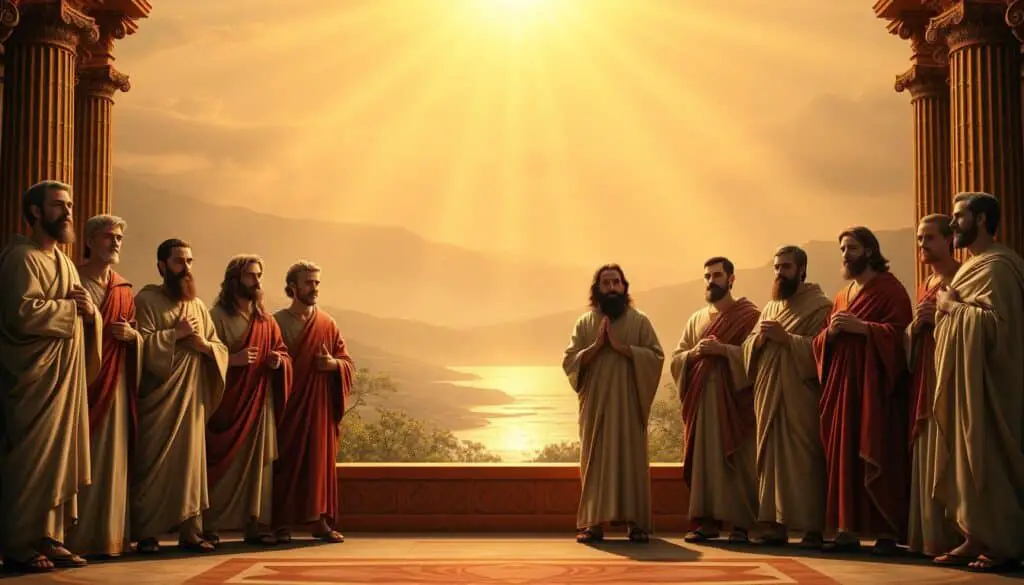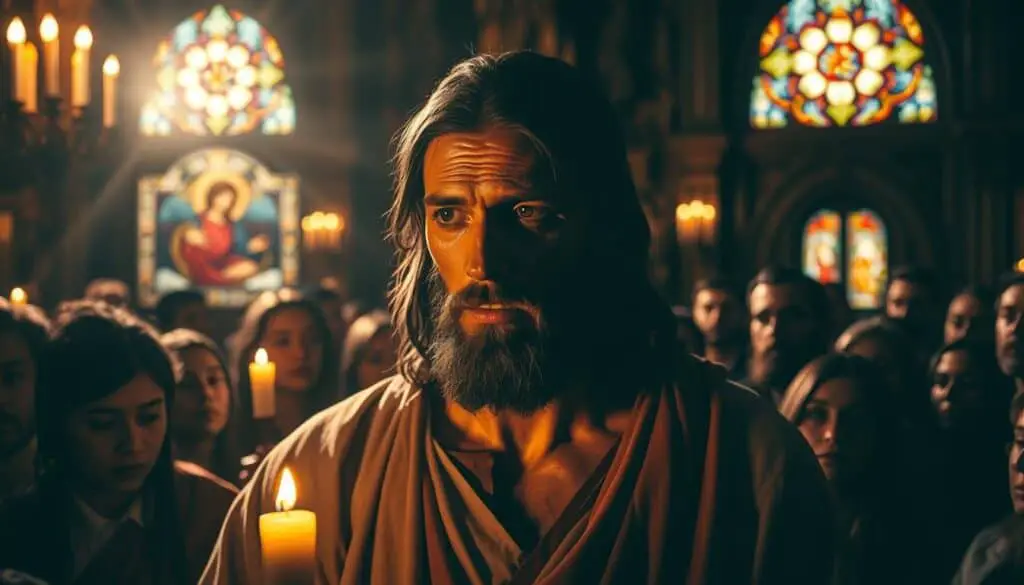Celebrating the birth of Jesus is a cornerstone of Christian faith, offering a time for reflection, joy, and connection with spiritual heritage. This guide explores the biblical, historical, and theological dimensions of Jesus’ birth, providing insights into its significance and traditions surrounding it.
The nativity story, as told in Matthew and Luke, forms the heart of Christmas celebrations. Yet, the exact date of Jesus’ birth remains a topic of debate. While December 25 is widely recognized, scholars suggest that the actual birth may have occurred in spring or fall, aligning with the biblical account of shepherds tending their flocks at night.
Historical records and theological discussions shed light on why December 25 was chosen, possibly to coincide with existing Roman festivals like the winter solstice. This section delves into these theories and explores how global traditions have embraced the celebration, blending cultural practices with religious observances.
Understanding the theological and historical contexts of Jesus’ birth enriches our appreciation of this sacred event. Whether through religious rituals or family traditions, the celebration remains a powerful reminder of faith, love, and renewal.
Key Takeaways
- Celebrating Jesus’ birth is central to Christian faith, blending spiritual reflection with cultural traditions.
- The Bible does not specify the exact date of Jesus’ birth, leading to scholarly debates and theories.
- December 25 was likely chosen to align with existing Roman festivals, influencing its widespread adoption.
- Historical and theological insights enhance our understanding and appreciation of the nativity story.
- Global traditions continue to evolve, blending religious practices with cultural celebrations.
Biblical and Historical Perspectives on Jesus’ Birth
The birth of Jesus is a pivotal event in Christian faith, rooted in both scripture and history. The Gospels of Matthew and Luke provide the primary accounts of this event. Matthew focuses on the genealogy of Jesus and the visit of the Magi, while Luke details the census under Caesar Augustus and the shepherds’ visit. These narratives offer complementary insights into the birth of Jesus.
Historically, King Herod’s reign (37–4 B.C.) and the census under Caesar Augustus help date Jesus’ birth. Scholars debate the exact year but place it between 7 and 4 B.C. The priestly courses mentioned in 1 Chronicles 24 also play a role in determining the timeline, particularly in understanding the service of Zechariah, John the Baptist’s father.
- The biblical accounts in Matthew and Luke provide distinct yet complementary details about Jesus’ birth.
- King Herod’s reign and the Roman census under Caesar Augustus are key historical markers.
- Priestly courses and the timing of Zechariah’s service offer further clues for dating Jesus’ birth.
Scholars use these scriptural and historical details to explore the actual time of Jesus’ birth, highlighting the complexity and richness of the event. The star guiding the Magi adds another layer of intrigue, showcasing the blend of divine and historical elements in the narrative.
Exploring the Timeline: When Was Jesus Born?
The question of when Jesus was born has sparked debate among scholars for centuries. While December 25 is widely recognized as His birthday, many believe His actual birth occurred in spring or fall.
Shepherds in ancient Judea typically tended their flocks during spring and fall, avoiding the cold winter months. This seasonal pattern suggests that Jesus’ birth might not have been in winter.
Astronomical observations also offer clues, with some scholars pointing to celestial events like planetary conjunctions around 6-4 BC as possible signs of His birth.
Additionally, the conception of John the Baptist, which is believed to have occurred in June, provides another timeline clue. Counting nine months later would place Jesus’ birth in March or April.

While the exact date remains uncertain, these factors contribute to the ongoing discussion about Jesus’ birth month, blending biblical clues with seasonal and astronomical insights.
Controversies Surrounding December 25th
The choice of December 25 as the date for celebrating the birth of Jesus has been a topic of debate among scholars and historians. Despite the lack of biblical evidence, this date became widely accepted, blending Christian and pre-existing pagan traditions.
Pagan Festivals and the Winter Solstice
The Roman festivals of Sol Invictus and Saturnalia, celebrated around the winter solstice, likely influenced the selection of December 25. These festivals, with their themes of renewal and feasting, provided a cultural framework that early Christians could adapt, easing the transition for pagans converting to Christianity.
Aligning Christmas with the winter solstice also symbolized the triumph of light over darkness, resonating with the spiritual message of Jesus’ arrival.
Alternative Theories: Spring or Autumn Origins
Scholars have proposed that Jesus’ birth might have occurred in spring or autumn. Shepherds tending their flocks, as mentioned in the Bible, would more likely do so during these seasons rather than in winter. Additionally, the conception of John the Baptist in June suggests Jesus’ birth could have been in March or April.
Some theories align Jesus’ birth with the Feast of Tabernacles in September, further supporting the idea of an autumn birth. These theories, though speculative, highlight the ongoing discussion about the timing of such a significant event.
The debate over the date of Jesus’ birth involves both historical traditions and calendar computations. While December 25 remains the widely recognized day, alternative theories continue to spark interest and discussion, reflecting the complexity of the event’s history and its enduring impact on modern celebrations.
Cultural and Global Celebrations of Christmas
Christmas is a vibrant tapestry of traditions, woven together by cultures from around the globe. Each country brings its unique customs, creating a rich and diverse celebration of the birth of Jesus. From festive decorations to heartfelt gatherings, these traditions reflect the blending of cultural influences with religious observance.
Traditions and Festive Customs Around the World
Christmas is celebrated differently across the world, showcasing the diversity of human culture. In Mexico, the tradition of Las Posadas reenacts Mary and Joseph’s search for shelter, while in India, homes are adorned with mango leaves and paper stars instead of traditional Christmas trees. Japan, on the other hand, embraces secular customs like Christmas lights and decorations, blending them with local festivities.
| Country | Tradition | Description |
|---|---|---|
| Mexico | Las Posadas | A nine-day celebration reenacting the journey of Mary and Joseph. |
| India | Mango Trees | Homes decorated with mango leaves and paper stars. |
| Japan | Secular Customs | Christmas trees and decorations blended with local traditions. |
These customs highlight how cultural influences merge with religious observance, creating a unique celebration in each region. Despite these differences, the core focus remains on commemorating the birth of Jesus, a unifying thread across all traditions.

“Christmas is a festival that unites diverse cultures through shared traditions, creating a global community bound by faith and celebration.”
Public holidays and school calendars often align with Christmas traditions, emphasizing its significance in societal schedules. Community events and church services play a vital role in maintaining these festive customs, fostering a sense of belonging and spiritual connection. The global impact of Christmas extends beyond religion, influencing commerce and social interactions, making it a truly universal celebration.
For those seeking inspiration, Bible verses offer heartfelt reflections, enriching the spiritual aspect of the season. Whether through family gatherings or communal events, Christmas remains a time of joy, unity, and spiritual renewal.
Influence of Pagan Traditions and the Roman Calendar
The celebration of Christmas on December 25 is deeply intertwined with ancient pagan traditions and the Roman calendar. Early Christian leaders strategically aligned their holidays with existing festivals to ease the transition for pagans converting to Christianity.
Transition from Pagan Observances to Christian Celebrations
The Roman festival of Saturnalia, held in December, was a time of feasting and gift-giving. This aligns with the festive nature of Christmas. Additionally, the festival of Sol Invictus, celebrating the “Birth of the Unconquered Sun,” was also in December, influencing the choice of date for Jesus’ birth celebration.
Emperor Constantine’s conversion in 336 AD marked a turning point. He supported the Christianization of existing Roman festivals, blending pagan traditions with Christian rituals. This strategic alignment helped spread Christianity by making it more relatable to the existing culture.
Scholars note that while December 25 is widely accepted, debates continue about its origins. The incorporation of pagan elements was a deliberate effort to facilitate religious conversion, reflecting the complex evolution of Christmas traditions.
Today, Christmas combines both ancient and Christian elements, creating a unique celebration that honors its rich historical roots while remaining a cornerstone of modern Christian faith.
Unpacking the Significance of the jesus birthday
The birth of Jesus holds profound theological significance, serving as the cornerstone of Christian faith. It is a celebration that transcends time, offering timeless lessons on redemption and divine love.
Theological Implications of the Nativity
The nativity story is deeply rooted in the fulfillment of Old Testament prophecies. Jesus’ birth represents the culmination of God’s redemptive plan, as foretold by prophets like Isaiah and Micah. This event symbolizes God’s faithfulness to His promises, reinforcing the Christian belief in a divine plan for humanity.
- Fulfillment of Old Testament prophecies
- Embodiment of God’s redemptive plan
- Symbol of hope and divine love

Impact on Christian Faith and Worship Practices
The birth of Jesus has profoundly shaped Christian worship and practices. It is celebrated not just as a historical event but as a living testament to God’s grace. The nativity narrative reassures believers of God’s redemptive plan, inspiring faith and devotion.
“The birth of Jesus is not just a historical event but a spiritual renewal that continues to inspire faith and hope in believers today.”
Modern theology draws heavily from the imagery and symbolism of the nativity, emphasizing themes of humility, love, and redemption. This event deepens our understanding of the spiritual meaning behind the celebration, making it a cornerstone of Christian doctrine.
Modern Reflections: Observance and Community Impact
Christmas today is a blend of timeless traditions and contemporary practices, creating a unique celebration that resonates across generations. The essence of the season lies in its ability to unite people, fostering a sense of community and shared values.
Contemporary Celebrations and Church Practices
Modern Christmas celebrations have evolved, incorporating new customs while preserving the spiritual core. Church gatherings remain central, offering a space for collective worship and reflection. Community events, from festive markets to charity drives, highlight the season’s emphasis on giving and togetherness.
Many families blend cultural traditions with religious observances, creating a personalized experience. For instance, some include ethnic foods or decorations, reflecting their heritage. This fusion enriches the celebration, making it a vibrant tapestry of traditions.

The economic impact of Christmas is significant, with holiday shopping and tourism boosting local economies. Schools and businesses often adjust their calendars, reflecting the holiday’s cultural importance. This adjustment underscores Christmas’s role as a time for rest and rejuvenation.
Even those who don’t regularly attend church find themselves drawn to the warmth of the season. The message of hope and unity transcends religious boundaries, making Christmas a universal celebration of human connection.
- Christmas blends tradition with modern practices, creating a unique experience.
- Community and church gatherings foster a sense of belonging.
- The season’s economic impact supports local businesses and tourism.
- Christmas unites people across cultures and beliefs, emphasizing shared values.
In summary, Christmas remains a cornerstone of community life, offering a time for spiritual reflection, family bonding, and cultural exchange. Its enduring appeal lies in its ability to adapt while preserving the values of love, hope, and unity.
Conclusion
Reflecting on the celebration of Jesus’ birth, it’s clear that this event holds deep significance across cultures and traditions. While debates continue about the exact date, with theories ranging from spring to December, the essence remains unchanged.
The biblical account, historical context, and global traditions each offer unique perspectives. Despite uncertainties, the birth of Jesus remains a cornerstone of Christian faith, symbolizing hope and divine love.
Understanding both the historical background and contemporary practices enriches our appreciation. From ancient customs to modern celebrations, the spirit of unity and reflection shines through.
As we honor this sacred event, let us embrace its unifying message. The birth of Jesus is a timeless celebration of faith, love, and renewal, connecting us all in shared joy and spiritual reflection.
FAQ
Why is December 25th celebrated as the birth date of Jesus?
December 25th was chosen to align with existing Roman festivals and the winter solstice. Early Christians incorporated this date to blend pagan traditions with the celebration of Jesus’ birth.
What connects the winter solstice to Jesus’ birth?
The winter solstice, marking the shortest day, was a significant pagan event. Early Christians adopted this time to symbolize Jesus as the “light of the world,” blending cultural practices with their faith.
How does the nine-month conception period tie into Jesus’ birth?
Jesus’ conception is believed to occur in spring, with birth nine months later in winter. This aligns with the biblical account of shepherds tending flocks, common in cooler months.
What evidence supports Jesus’ birth in spring or autumn?
Some scholars suggest Jesus was born in spring or autumn based on shepherding patterns and the census mentioned in Luke. However, December 25th remains the traditional date.
How did pagan festivals influence Christmas traditions?
Pagan festivals like Saturnalia and Yule influenced Christmas customs, such as gift-giving and evergreen trees, blending into the celebration of Jesus’ birth.
What role did the Roman calendar play in setting Jesus’ birth date?
The Roman calendar’s festivals in winter likely influenced the choice of December 25th. This alignment helped integrate Christian celebrations into existing cultural practices.
How do global cultures celebrate Jesus’ birth differently?
Celebrations vary widely, from posadas in Mexico to La Befana in Italy, each adding unique cultural traditions to the universal commemoration of Jesus’ birth.
What theological significance does Jesus’ birth hold?
Jesus’ birth is seen as the incarnation of God, emphasizing divine love and humanity’s redemption, central to Christian faith and worship practices.
How has the celebration of Jesus’ birth evolved today?
Modern celebrations blend religious observances with cultural festivities, fostering community through church services, family gatherings, and acts of kindness.












